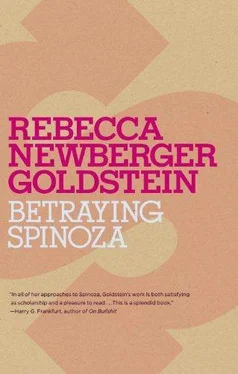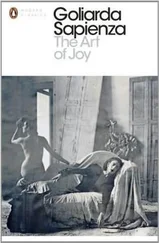VI. Epilogue
1. Colerus speaks of a “Dr. L. M.,” which suggests Spinoza’s old and loyal friend Lodewijk Meyer, who was, in addition to other things, a doctor. However, he also reports, on the testimony of an outraged van der Spyck, of the doctor in attendance at Spinoza’s death “who just that evening returned to Amsterdam by the nightboat, not even seeing to the care of the deceased. But he made off with some money that Spinoza had left lying on the table, along with some ducats and a few gold pieces, and a knife with a silver handle.” It is possible, if indeed this was Meyer, that the disappearance of the items was, as Steven Nadler suggests in Spinoza: A Life (Cambridge and New York: Cambridge University Press, 1999), “more likely explained as a case of memento collecting rather than theft” (p. 350). However, another young physician, Georg Hermann Schuller, a shadier character who had insinuated himself into Spinoza’s circle in the early 1670s, claimed in letters to have been present at Spinoza’s death, and told Leibniz that he had searched through Spinoza’s things “thoroughly, one by one, before and after his death.” On Schuller’s possible presence at the philosopher’s death, see Steenbakker’s, Spinoza’s Ethica from Manuscript to Print , pp. 50–63.
2. Thomas Jefferson, letter to his young nephew Peter Carr, August 10, 1787. From Adrienne Koch, ed., The American Enlightenment: The Shaping of the American Experiment and a Free Society (New York: George Braziller, 1965), pp. 320–21.
This book would not, and could not, have been written without the vision and encouragement of Jonathan Rosen. A more thoughtful editor — in ways both intellectual and moral — cannot be imagined. A brilliant writer himself, Jonathan engages the writer, challenges the writer, trusts the writer. For me, this last gift was all important, allowing me to approach Spinoza in a far more personal way than I would have been able to do under any other circumstances.
Dan Frank read the first draft of Betraying Spinoza , and his insightful comments were important in giving final shape to the book.
Aside from Jonathan and Dan, two people read the entire manuscript while it was still in progress, and their comments and enthusiasm were invaluable. These are Yael Goldstein and Steven Pinker, two of the best readers on the planet.
I would also like to thank the many students who have passed though my course “Seventeenth-Century Rationalism: Descartes, Spinoza, and Leibniz,” first at Barnard College and, more recently, at Trinity College, in Hartford, Connecticut. I hope that the intellectual intensity that they brought to those classes has sustained them, as it has me, and that they remember my warning that if they ever write to me in the way that Spinoza’s student Albert Burgh wrote to him (“wretched pigmy, vile worm of the earth”), I shall not answer.
Among the books from which I drew, Steven Nadler’s magisterial biography of the philosopher, Spinoza: A Life , was the most important. I also admire his Spinoza’s Heresy: Immortality and the Jewish Mind , even though I ultimately disagree with his proposed solution to the mystery behind the unusual vehemence of Spinoza’s excommunication.
In addition to the books that are already cited in the text and footnotes, the following books are recommended to those interested in further reading: Melvin Konner’s Unsettled: An Anthropology of the Jews (New York: Viking Compass, 2003); Cecil Roth’s A History of the Marranos (New York: Harper and Row, 1966); Benzion Netanyahu’s The Origins of the Inquisition in Fifteenth-Century Spain (New York: Random House, 1995), as well as his The Marranos of Spain: From the Late 14th Century to the Early 16th Century According to Hebrew Sources (Ithaca, N.Y.: Cornell University Press, 1999); Jane S. Gerber’s Jews of Spain: A History of the Sephardic Experience (New York: Free Press, rep., 1994); Stuart Hampshire’s Spinoza and Spinozism (Oxford and New York: Oxford University Press, 2005); Harry Anstryn Wolfson’s Philosophy of Spinoza: Unfolding the Latent Process of His Reasoning (Cambridge, Mass.: Harvard University Press, repr., 1983); Jonathan Francis Bennett’s A Study of Spinoza’s Ethics (Indianapolis, Ind.: Hackett Publishing Company, 1984); Jewish Themes in Spinoza’s Philosophy , edited by Heidi M. Ravven and Lenn E. Goodman (Albany, N.Y.: State University of New York Press, 2002); and Leo Strauss’s Persecution and the Art of Writing (Chicago: University of Chicago Press, 1988). This last book is by the University of Chicago scholar and expert on the art of ambiguity whose own ideas have gone on to play an ambiguous role in American politics. Strauss makes Spinoza’s texts central in his argument about the relationship between philosophy and power, the heterodox writer’s art of disguising his thoughts in his writing, and the reader’s interpretive art of uncovering them. This is an aspect of the continuing life of Spinoza that I was unable to address in this book.
Finally, I heartily recommend the short story “The Spinoza of Market Street,” by the Yiddish-American writer and Nobel laureate Isaac Bashevis Singer. The protagonist of Singer’s story, Dr. Nahum Fischelson, also ends up betraying Spinoza, delivering a last line that I now usurp as my own: “Divine Spinoza, forgive me. I have become a fool.”












